 |
 |
| 愛知県陶磁資料館 Aichi Prefectural Ceramic Museum [Photos taken on Aug. 25, 2001] |
| 2001年8月25日愛知県陶磁資料館(注1)へ行き、資料館の学芸員の皆さんの説明 を熱心に聞きました。 On Aug. 25, 2001, I have visited Aichi Prefectural Ceramic Museum(see Note 1) Curators in the museum are very kind to explain the exhibits, and I have listened to them in order to make the best use of the explanation in terms of guiding foreigners. |
| 1本館(注2) Main Hall(See Note 2) |
2 本館1階テーマ展示(注2) Main Hall 1st floor Theme Exhibition (No.1 Exhitition Room) (See Note 2) |
3 本館2階常設展 (注2) Main Hall 2nd floor Permanent Collections (No.3Exhibition Room)(See Note 2) |
 |
 |
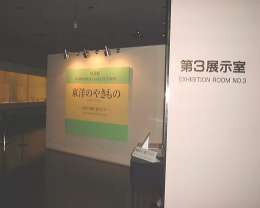 |
| 4 第3展示室の前の休憩所 Rest place before No.3 Exhibition Room |
5 地下1階の売店と休憩所 Shop and Rest place at first basement |
6 地下1階第7展示室(注3) No.7 Exhibitioin Room (See Note 3) at first basement |
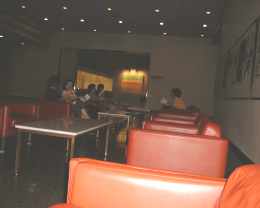 |
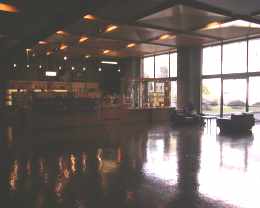 |
 |
| 7 南館(注4) South Hall (See Note 4) |
8 西館(注5) West Hall (See Note 5) |
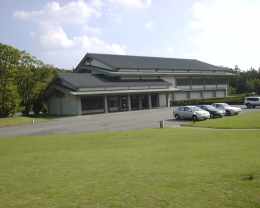 |
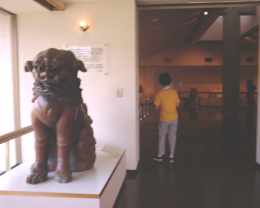 |
| 9 復元古窯(注6) Replicas of Old kilns (See Note 6) |
10 古窯館(注7) Kiln House (See Note 7) |
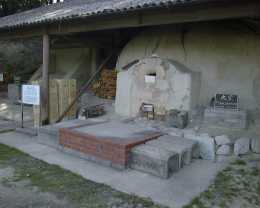 |
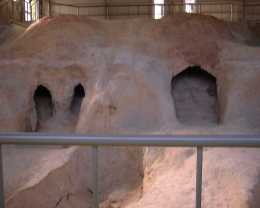 |
| 注1 愛知県陶磁資料館 (本資料館パンプレットの’ごあいさつ’から一部引用) 愛知県の産業と文化はやきものと深いつながりをもって発展し、はぐくまれてきました。 こうした陶磁器にかかわる歴史的・産業的に貴重な文化遺産を収集・保存していくこと はこの地域に課された責務でもある。愛知県ではこのような期待をになって本県誕生 100年記念事業のひとつとして昭和53年(1978年) やきものの町、瀬戸市の緑濃い 丘陵地の一角に、愛知県陶磁資料館を建設しました。世界に誇りうる陶磁文化の殿堂 へとの発展をめざして、開館され、その後、茶室や作陶を楽しめる施設等を充実させ、 平成6年(1994年)に全面的な改装を終え、全館完成オープンされた。 注2 本館 常設展示室、特別企画展示室、図書室(約7,000冊の蔵書)、ビデオコーナー、 レストランなどがあり, 常設展示室では日本をはじめ、世界各地の名品を楽しめます。 特別企画展示室では多彩なテーマで特別展を開催します。 注3 本館地下1階第7展示室 日本や世界各地の現代陶芸作品をゆったりした空間で楽しめます。 注4 南館 色彩豊かな、造形美溢れる瀬戸の置物を見ながら、ノベルティの歴史を学べます。 注5 西館 人々が願い事を託して神社等へ奉納した陶磁の狛犬(愛知県指定有形民俗文化財) が100点ほど展示。 注6 復元古窯 瀬戸で使われた室町時代(16世紀)の大窯と江戸時代(18世紀頃)の登り窯を実際に 使えるように復元。 注7 古窯館 駐車場造成の時に発掘された平安時代末から鎌倉時代(12世紀〜13世紀)のあな窯 Note 1 Aichi Prefectural Ceramic Museum The industry and culture of Aichi Prefecture have developed deeply in connection with ceramics. People of this area feel responsible for collecting and preserving the cultural heritage with historically and industrially precisous value. Under the above background, the Prefectural Government has constructed this unique Ceramic Museum at the hill in fresh greenery of Seto City, a town famous with ceramics in 1978 as part of Aichi's centennial commemorative project. Aiming at a sanctuary of ceramics culture which will be able to send messages or informations in relation with ceramics worldwide, this Museum has been established. After that, a tea ceremony house or Ceramics Craft Studio have been added. Producing works of pottery can be enjoyed in the studio. Redecoration of all facilities has been completed in 1994 and the whole facilities have been opened. Note 2 Main Hall Permanent Exhibition Rooms, Special Theme Exhibition Rooms, a Library (about 7,000 books), Video Display Rooms and a Restaurant are arranged. You can enjoy masterpieces from foreign countries as well as from Japan at the Permanent Exhibition Room. Works of art on verious themes are exhibited at the Special Theme Exhibition Room. Note 3 Permanent Exhibitioin Room No. 7 at first basement of Main Hall You will be able to enjoy comtemporary works of ceramic art from all over the world as well as from Japan at the spacious and comfortable room. Note 4 South Hall You can learn the history of novelties while looking at colorful and plastic arts-like ornaments of fine ceramics made by Seto City such as person, doll, or animal . Note 5 West Hall About 100 Komainu (lion-dog) made by ceramics are exhibited. People entrusted their wish to Komainu which were offered to shrines or temples by people. Komainu are tangible folk cultural properties designated by Aichi Prefecture. Note 6 Replicas of Old Kilns Big kiln (called 'Oogama') used in 16th century and Climbing kilns (called 'noborigama') used in 18th century are replicated so that they can be used actually. Note 7 Old Kiln House Tunnel-like kilns (called 'Anagama') used in 12th to 13th century which have been excavated when preparing parking lots. |